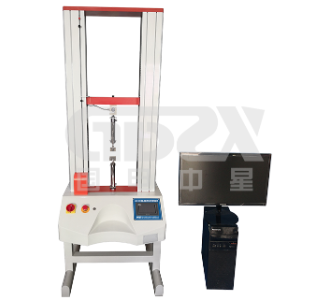NEWSnews
Calibration and Inspection Methods for Tensile Testing Machines
When using an electronic tensile testing machine for calibration, attention should be paid to the following aspects:

Ensure that the equipment is in good condition: Before calibration, it is necessary to ensure that the electronic tensile testing machine is in good working condition. This includes checking whether the equipment instruments are displaying properly, whether the stretching machine fixtures, fixture heads, etc. are installed correctly, and whether the cables and power supply are properly connected.
Use standard weight weights for calibration: During the force value calibration process, the standard weight weights should be lightly hung on the fixture connection seat and the force value displayed on the computer should be recorded. The difference between the calculated weight and the standard weight should not exceed ± 1%. If the error is large, it may be a problem with the sensor, and the software's force value should be reset and tested multiple times.
Performing multi-point calibration to improve efficiency: Generally, performing three-point calibration can achieve very good accuracy. The second point usually takes 3-5% of the sensor range, and the third point takes 30-50%. This can ensure the accuracy of calibration.
Ensure the continuity and incrementality of the calibration process: During the calibration process, it is necessary to ensure that the "AD value" and "standard weight value" of the next point are both larger than the previous point, otherwise the calibration will be inaccurate.
Regular calibration: It is necessary to calibrate electronic tensile testing machines regularly to maintain the accuracy of test results. If the tensile testing machine is disassembled, transported or repaired, it should be calibrated and inspected.
Check for auxiliary devices that may affect the force measurement system: If auxiliary devices (such as pointers and recorders) are used during the test, they should be inspected according to the calibration standards of the auxiliary devices.
Understand the calibration requirements for different force measurement systems: If an electronic tensile testing machine has multiple force measurement systems, each system should be calibrated separately. For double piston hydraulic testing machines, calibration should also be carried out according to this theory.
In general, the above precautions can ensure the accuracy of the calibration process of the electronic tensile testing machine, thereby ensuring the reliability of the test results. In practical operation, it is necessary to strictly follow the equipment operation manual and relevant standards to ensure the professionalism and accuracy of calibration work.
GDZX is a manufacturer of power testing equipment, producing a wide range of products with complete models and providing professional technical support. The phone number is 4000-828-027.





















